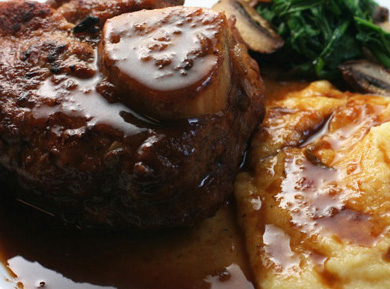Pressure Cookers
How do Pressure Cookers Work?
Normally water will boil at 212F (100C) at sea level Atmospheric pressure at 1,01325 bar, i.e. normal atmospheric pressure on the sea level at 0°C --'in an open system'. At this temperature liquid water turns to gas. Applying more heat to an open pot of water will only increase the rate that liquid water turns to vapor but will not increase the temperature of the liquid.
If the pressure is decreased (e.g., at higher elevations) the point that water boils will be decreased (since it is easier for water molecules to escape the surface). If we increase the pressure on water it becomes more difficult for water molecules to escape the surface and a higher temperature is required for the water to boil.
In a closed container things change. The water and vapor are in equilibrium and will maintain the same temperature. With no place to escape if heat is applied to the closed container the molecules in the gas state will increase velocity, hence temperature. This will increase the pressure on the surface of the liquid. And, the temperature of the water system will then increase.

Maillard Reaction and Pressure Cooking
The Maillard Reaction is what causes food to brown and gives that nice flavor. While the Maillard reaction can even take place at room temperature it starts to take off at temperatures above 250F. So there should be a greater amount of Maillard reaction ocurring during pressure cooking than normal simmering of stocks and stews. This is clearly verified when viewing and tasting stocks cooked using a pressurecooker.
Pressure Cooker Advantages:
-- Steam cooks many foods quicker than dry cooking methods.
-- makes excellent sauces after sautéing by dissolving products of caramelization and mallaird reaction
--works well with foods that require water infusion/braising methods
--foods that are steamed retain more nutrients and vitamins and flavor
--higher temperatures more effective at killing bacteria and viruses
--saves money since works on very low flame
Pressure Cooker Disadvantages:
-- takes time to heat liquid and time for pressure to be released so foods that cook within 15 minutes does not really save time.
-- cooks using water so foods that benefit by high heat (maillard reaction) will not produce desirable effects
--everything has to be cooked at the same time
--care must be taken when pressure is released
--while some Maillard reaction occurs food still has a steamed taste unless sufficient browning is done before or after cooking,What foods are best cooked using a pressure cooker?
Braising tough cuts of meat -- When cooking meat make sure to sear the meat first just as you would do when braising.

This Osso Bucco shown above is very soft and succulent after only being cooked for 40 minutes in a pressure cooker at 15 psi. Shown above the meat was brushed with sauce and slightly glazed using a blowtorch before serving...
Beans --Pressure cooking beans is fast and easy, but it's important to oil when doing so to keeps the beans from foaming up as well as keeping the skins from popping. Beans can have a tendency to clock the air vents so be sure to clean properly after cooking beans.
Artichokes -- Making artichokes using a pressure cooker is fairly simple, and they come out perfectly cooked and very delicious.
Stocks -- According to Heston Blumenthal of the Fat Duck --..."at the Fat Duck we've just started using a brilliant gadget to make stocks. It's not exactly cutting-edge - it's the humble pressure cooker - but it makes stock better and quicker than any other method I know of..." See our recipe for duck stock which we use a pressure cooker for 1 1/2 hours.
Under cooking and over cooking foods with the pressure cooker.
One of the problems you will encounter if just starting with a new pressure cooking is the times used to cook food. It is best therefore to abide by the times recommended by the manufacturer since pressure cookers will vary from one to another. A good rule of thumb is it is better to undercook than overcook since you can always increase time.
Chefs Signature Recipes
- Joel Robuchon -- Pomme Puree
- Fusilli, Red Wine-braised Octopus - Micahel White
- Sea Bass en Paupiette- Daniel Boulud
- Chocolate Molten Cake-Jean George
- Salmon Sorrel Sauce - Troisgros
- Scallops on Cauliflower Puree with White Raisin - Gordon Ramsay
- Lobster, Red Pepper - George Blanc
Featured Recipes
- Pan Seared Black Sea Bass with Pea and Jalepeno Sauce
- Carrot Soup with Ginger and Curry
- Grrenmarket Bouillabaisse
- Cold Cucumber Soup Tuna Tartare
- Baked Eggs (En Cocotte)
- Seared Salmon with Brussel Sprouts, Mustard Sauce
- Seared Scallops with Swiss Chard, Bacon and Monkfish Liver Sauce
EDinformatics Best Restaurants in Venice